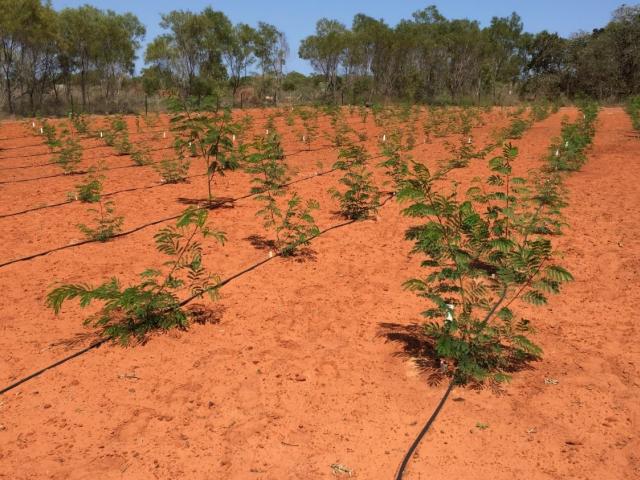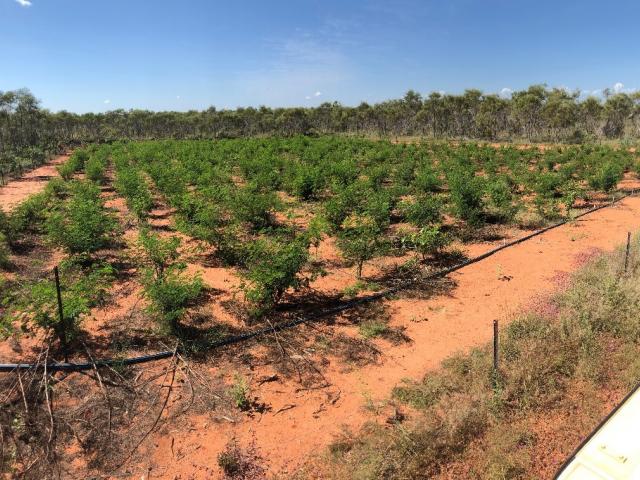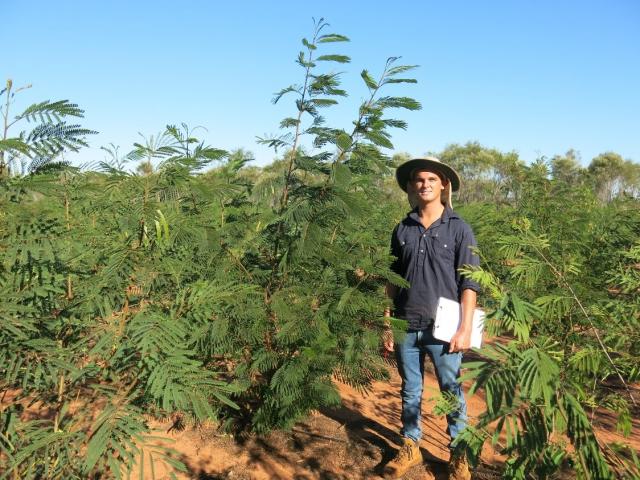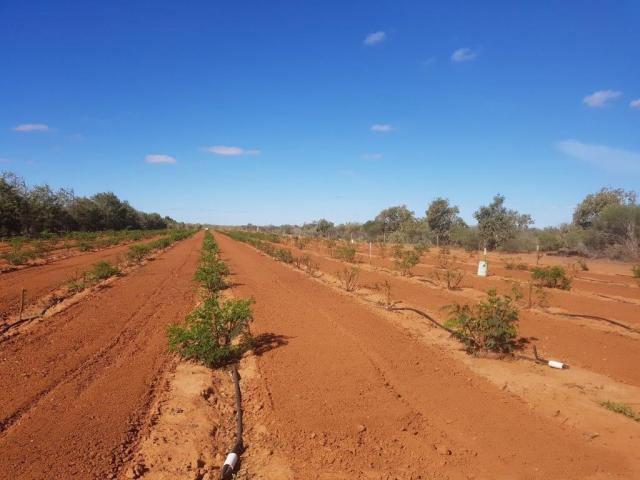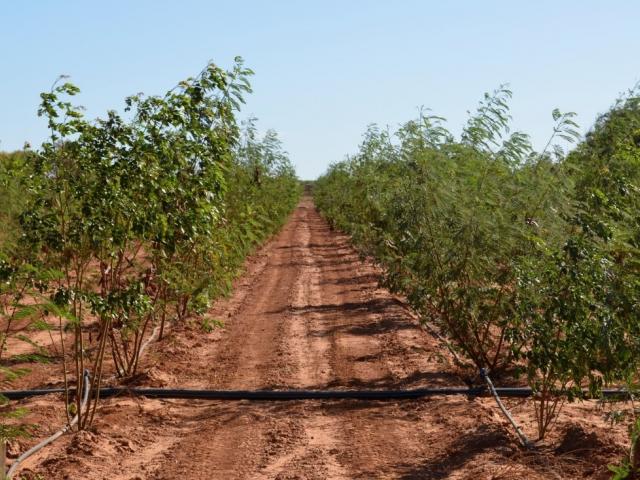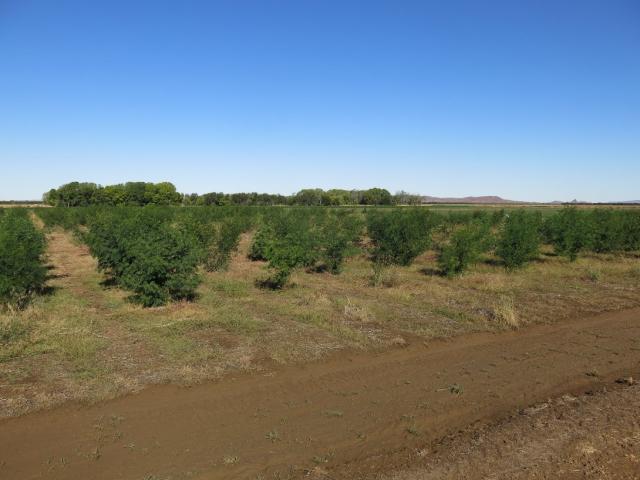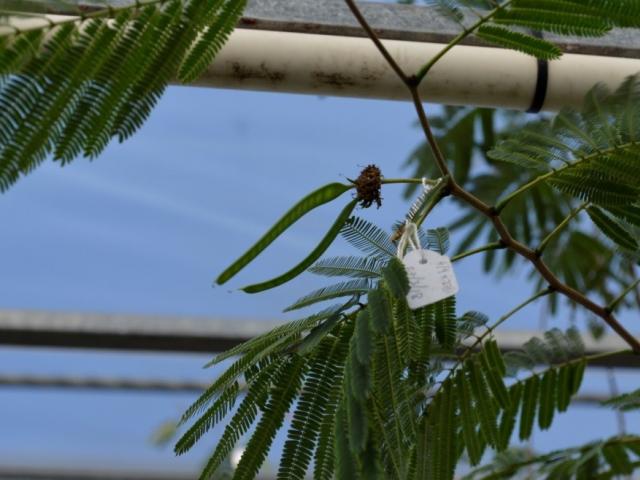Sterile leucaena
The department has attracted funding from the MLA Donor Company to examine the feasibility of developing a sterile leucaena variety that has all the production benefits of leucaena but does not produce viable seed, significantly reducing its weed risk for Western Australia’s rangelands.
Leucaena (Leucaena leucocephala) produced in tropical/sub-tropical Queensland is one of the most profitable forage options available for beef production. However, L. leucocephala is a contentious species as although it is highly regarded for its feed quality and use in animal production, it can also become a serious environmental weed.
Leucaena leucocephala is currently not approved for use on pastoral leases in the Kimberley and Pilbara regions of Western Australia due to its assessment as a very high weed risk in these situations. However, there is still considerable interest in dryland production of leucaena in Western Australia and this is the main driver for considering a sterile/seedless form. Opportunities for irrigated leucaena production are also increasing and would allow leucaena to be grown in areas considered well outside their ideal environment.
Methodology
The project will define the most suitable technology for developing a sterile leucaena, including a cost benefit analysis of preferred strategies. A range of novel breeding and molecular technologies are being applied with support from New Mexico State University and Murdoch University. Parent material for the breeding program has been selected from a series of field nurseries across northern WA. The diversity of growing environments across the sites provides a great opportunity to see the genetic variability in the leucaena collection, allowing us to identify well-adapted and high performing parent material.
The project has assembled 225 accessions of 15 different species of leucaena to evaluate. An accession is a species of leucaena that has been collected from different parts of the world. There are multiple accessions from within the same species, and each can express differences in phenotype due to the difference in geographical origin of the plant. Field nurseries have been established in Carnarvon, Broome and Kununurra to reflect key climate and soil types. They range from black cracking clays to red Pindan sands (Table 1.) and were all established by seedling transplants under irrigation in May-June 2018. The accessions are being evaluated for their ability to recover after cutting (to simulate grazing), drought tolerance, feed quality and growth habit. The elite material will go into the breeding program with the goal to create a 100% sterile leucaena that is adapted to the environment, has high feed quality to fatten cattle and is easier to manage.
| Site | Location | Soil type | % clay | % sand | % silt | % Carbon |
|---|---|---|---|---|---|---|
| Kununurra | DPIRD RSU | Black (cununurra) clay | 43 | 37 | 20 | 0.43 |
| Broome | Water Corp | Red (pindan) sand | 7 | 90 | 3 | 0.32 |
| Carnarvon | DPIRD RSU | Red sandy clay loam | 30 | 55 | 15 | 0.72 |
Breeding strategies start with the plant’s ploidy level, which refers to the number of pairs of chromosomes in the cells of the plants. Five leucaena species have four sets of chromosomes (tetraploid) and 19 species of leucaena have two sets of chromosomes (diploid). The main species of interest is the commercial Leucaena leucocephala, which is tetraploid and highly regarded for its forage quality, production, and persistence. A potential strategy for this species is a gene editing technology called CRISPR, which can be used to edit out a flowering gene and develop a non-flowering L. leucocephala and/or create male/female sterile lines of L. leucocephala. A sterile triploid can be created using conventional plant breeding techniques, through crossing a tetraploid species with a diploid species. A species with three sets of chromosomes (triploid) is often observed to be sterile or has much reduced viable seed production. The strategy here is to cross the tetraploid species (L. leucocephala and/or L. diversifolia) with diploid species that have good forage attributes such as L. collinsii, L. macrophylla, L. shannonii, L. retusa and L. pulverulenta.
The project has now created a large number of triploid crosses for field evaluation at the nursery sites, with new generations planted in 2020 and 2021. The project is planned to continue to March 2022.

